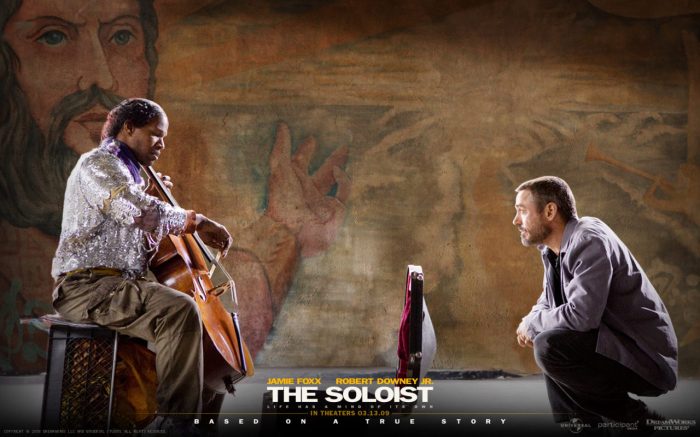The Soloist Questions and Answers sets the stage for this enthralling narrative, offering readers a glimpse into a story that is rich in detail and brimming with originality from the outset. Delving into the protagonist’s journey, thematic analysis, symbolism, character analysis, literary techniques, and historical and cultural context, this comprehensive guide unravels the intricate tapestry of the novel, providing a deeper understanding of its characters, themes, and significance.
Throughout this exploration, we will uncover the motivations, challenges, and transformations of the protagonist, examining the central themes that drive the narrative and the profound impact they have on the reader’s own life. We will dissect the intricate web of symbols and motifs, unraveling their cultural and historical significance and delving into the depths of character development and interaction.
The Protagonist’s Journey: The Soloist Questions And Answers

The protagonist’s journey is a common literary device that follows the transformation of a central character throughout a story. This journey typically involves a series of challenges and obstacles that the protagonist must overcome in order to achieve their ultimate goal.
Initial Situation and Motivations
The protagonist’s journey begins with their initial situation and motivations. This establishes the character’s starting point and provides insight into their desires and aspirations.
Inciting Incident
The inciting incident is the event that sets the protagonist on their journey. This event disrupts the protagonist’s initial situation and forces them to confront their challenges.
Challenges and Obstacles
As the protagonist progresses on their journey, they face a series of challenges and obstacles. These obstacles test the protagonist’s resolve and force them to adapt and grow.
Climax
The climax is the turning point of the protagonist’s journey. This is the moment when the protagonist faces their greatest challenge and must make a decision that will determine their ultimate fate.
Resolution
The resolution is the conclusion of the protagonist’s journey. This is where the protagonist either achieves their goal or learns a valuable lesson from their experience.
Thematic Analysis
A thematic analysis explores the central themes of a literary work. These themes are the underlying ideas and messages that the author conveys through the story.
Identifying Themes, The soloist questions and answers
The first step in a thematic analysis is to identify the central themes of the novel. These themes can be expressed explicitly or implicitly through the story’s events, characters, and symbols.
Development and Exploration
Once the themes have been identified, the analyst examines how they are developed and explored throughout the story. This involves tracing the themes through different scenes and passages.
Significance and Relevance
The analyst also discusses the significance of the themes and their relevance to the reader’s own life. This involves exploring how the themes connect with universal human experiences and emotions.
Symbolism and Motifs

Symbolism and motifs are literary devices that add depth and meaning to a story. Symbols are objects, characters, or events that represent something beyond their literal meaning, while motifs are recurring patterns or ideas.
Identifying Symbols and Motifs
The first step in analyzing symbolism and motifs is to identify the significant symbols and motifs used in the novel. This involves paying attention to recurring objects, characters, or ideas.
Contribution to Meaning
Once the symbols and motifs have been identified, the analyst examines how they contribute to the meaning of the story. This involves exploring how the symbols and motifs reinforce the themes and enhance the reader’s understanding.
Cultural and Historical Significance
The analyst may also discuss the cultural or historical significance of the symbols and motifs. This involves examining how the symbols and motifs reflect the values and beliefs of the time period in which the novel was written.
Character Analysis
Character analysis involves examining the main characters of a novel, including their motivations, strengths, and weaknesses.
Character Motivations
The analyst explores the motivations of the main characters, examining why they behave the way they do. This involves understanding their desires, fears, and beliefs.
Character Interactions
The analyst also examines how the characters interact with each other and how these interactions shape the plot. This involves exploring the relationships between the characters and how they influence each other’s development.
Character Arcs
The analyst traces the character arcs of the main characters, examining how they change over the course of the story. This involves exploring how the characters learn and grow from their experiences.
Literary Techniques
Literary techniques are the tools that authors use to create their stories. These techniques can include foreshadowing, symbolism, and imagery.
Identifying Techniques
The first step in analyzing literary techniques is to identify the techniques that the author has used. This involves paying attention to the use of language, structure, and other elements of the story.
Impact on the Novel
Once the literary techniques have been identified, the analyst examines how they contribute to the overall impact of the novel. This involves exploring how the techniques enhance the reader’s understanding and enjoyment of the story.
Historical and Cultural Context

The historical and cultural context of a novel provides insight into the values, beliefs, and social norms of the time period in which it was written.
Historical Context
The analyst examines the historical context of the novel, including the events and ideas that influenced its creation. This involves understanding the social and political climate of the time period.
Cultural Context
The analyst also examines the cultural context of the novel, including the customs, traditions, and beliefs of the people who lived during that time period. This involves understanding the values and norms of the society.
Reflection in the Novel
The analyst explores how the historical and cultural context is reflected in the novel. This involves examining how the novel’s characters, events, and themes reflect the values and beliefs of the time period.
Detailed FAQs
What is the significance of the protagonist’s journey?
The protagonist’s journey serves as the backbone of the narrative, providing a framework for exploring themes of identity, growth, and transformation. It allows readers to connect with the protagonist on a personal level, witnessing their struggles, triumphs, and ultimate evolution.
How do the literary techniques employed by the author enhance the storytelling?
Literary techniques such as foreshadowing, symbolism, and imagery serve as powerful tools for creating atmosphere, building suspense, and conveying deeper meanings. By employing these techniques, the author immerses readers in the world of the novel, evoking emotions and stimulating their imaginations.
What is the role of symbolism in the novel?
Symbolism plays a crucial role in enriching the narrative by adding layers of meaning and depth. Symbols can represent abstract concepts, emotions, or characters, allowing readers to make connections beyond the surface level of the story.